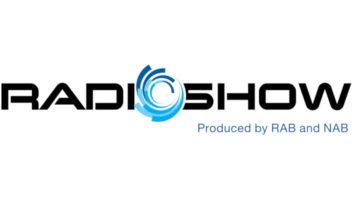It’s alright to admit it. With all the changes taking place in terms of technology and consumer listening habits, the balance of time that consumers spend with digital media versus traditional media like radio is growing.
And that realization can be alarming.
Yet despite the sizable shifts taking place in terms of technology adoption and listener habits, radio has continued to evolve because the industry is beginning to make smarter use of data.
[Read: Radio World at the Radio Show]
So how does one go about capturing, selling and monetizing the data that a station has on its listeners in ways that are beneficial? And why is it so important for radio stations to be doing this?
That was the question posed at the opening session of the NAB Radio Show in Orlando on Sept. 25. Called “Data U — A 101 on Data and What’s Next For Radio,” the session brought together general managers, CEOs and journalists to attempt to demystify data and pinpoint how stations can better capitalize on it.
“Advancements have created opportunities for all radio stations,” said Erica Farber, president and CEO of the Radio Advertising Bureau, who opened the session with Steve Newberry, NAB executive vice president for strategic planning. And with that, so too are the new ways that listeners are engaging with radio.
Mining data is one way to take advantage of those shifts, she said.
By mining data for insights, stations can better understand their listeners as individuals. It can reinforce the personal connection that listeners have with their radio stations. It clarifies what’s important to them and what will make their lives more fulfilling. It helps uncover what motivates a consumer.
Data now has to be a piece of the conversation, Farber said. It’s providing information that ultimately builds insight. It can also help position station programming when it comes to why and who stations are engaging, she said.
For iHeartMedia CEO and Chairman Bob Pittman and Entercom Chairman David Field, radio today is all about companionship. Field and Pittman were part of a two-person panel during the “Data U” session that was moderated by MSNBC Anchor Stephanie Ruhle.
“[Radio] is a multiplatform, integrated medium that at its heart is about companionship that is delivering great local content and connects with audiences,” Field said. “In a world of extraordinary change, radio is the least disruptive of all media. Radio has remained robust because of that fundamental essence.”
Yet radio has struggled against the Googles and Facebooks of the world because it hasn’t been as effective at demonstrating its power and effectiveness in reaching audiences, Field said.
Data is the game changer. “It allows us to drive attribution data to what we know to fundamentally shift the conversation to allow radio to close that attribution gap,” Field said.
What radio has — that digital mediums lack — is a relationship with the listener. People have a relationship with radio in a way that they do not with a social media platform, Ruhle said.
“Radio is the Rodney Dangerfield of media,” Field said to laughs. “Radio doesn’t get credit for the impact we have.”
Now, however, radio needs to be able to show individual advertisers what the metrics are.
But how do to get started?
“You are collecting more data right now than you know from Facebook, Google Analytics and your station email database,” said Tim Clarke, Cox vice president of content and audience in a taped segment shown to the audience.
“You can begin the conversation by looking at it. We can overcomplicate data. The truth of the matter is, if you start collecting and assessing the data you have available, you can start a conversation and let that data you have now start driving conversations on a daily basis.”












